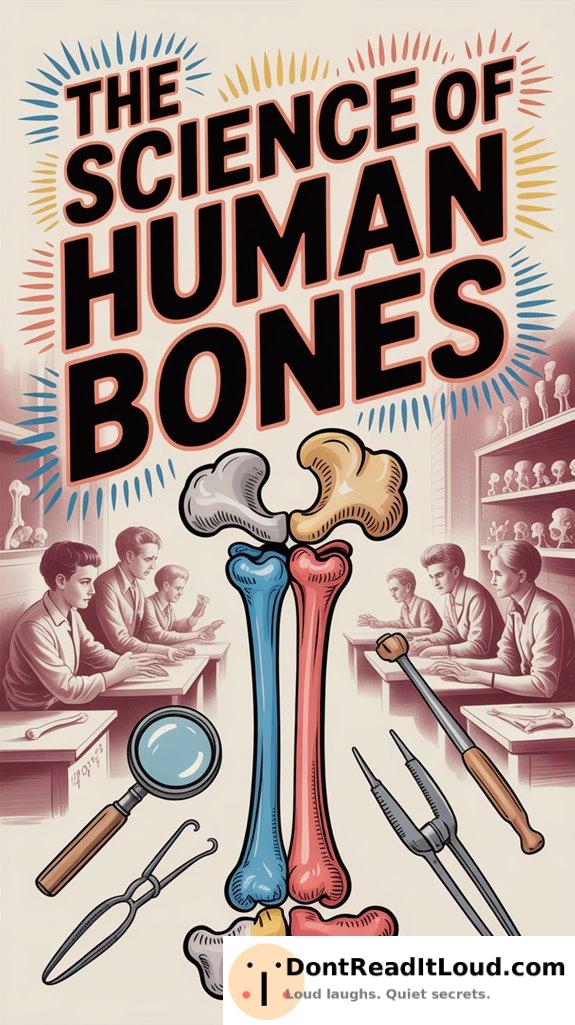
Your bones aren’t just skeletons holding you up; they’re living tissues that constantly change. Made of a dense structure, they’re reinforced by collagen for both strength and flexibility. Bones store essential minerals like calcium and phosphate, releasing them to maintain your body’s balance. Scientific advances now allow earlier detection of bone issues, helping you stay healthier as you age. These remarkable structures support every movement, and ongoing research continues to reveal new discoveries about them.
Bone Structure and Composition
While you mightn’t think about it often, the structure and composition of human bones are essential to your daily life. Envision trying to stand up with bones made of jelly! Thankfully, your bones are dense enough to keep you upright, nothing like a floppy pool noodle.
Inside, collagen fibers provide flexibility, acting like secret agents for your skeletal system. They make sure your bones don’t snap like your aunt’s peanut brittle. Bone density and collagen work together, balancing strength with flexibility.
The Process of Bone Remodeling
Although you mightn’t realize it, your bones are always going through a remarkable process called remodeling. It’s as if they’re enrolled in a 24/7 gym you never signed up for. Two types of cells are involved: osteoclasts and osteoblasts.
Osteoclasts act like a demolition crew, breaking down old bone in a process known as resorption. On the other hand, osteoblasts are the builders, forming new bone to keep your skeleton strong.
This teamwork helps your bones stay healthy, whether you’re dancing or working out. Even though you can’t sense these microscopic changes, they prevent your bones from becoming weak.
Take a moment to appreciate this behind-the-scenes work that keeps you standing tall!
The Role of Bones in Mineral Homeostasis
Ever wonder how your body maintains its mineral balance? Your bones are the unsung heroes in this process. Think of them as your body’s secret stash, storing calcium and phosphate like a squirrel hoarding nuts for winter.
When your body needs extra calcium, your bones quickly release it into the bloodstream.
Phosphate balance matters too—your bones handle this as well. They’re like that friend who can juggle while riding a unicycle—totally impressive! So next time you think about bone health, remember: bones do more than provide structure. They work hard to keep your minerals in check. Cheers to your bony superheroes!
Advances in Bone Health Research
In recent years, breakthroughs in bone health research have transformed our understanding and treatment of skeletal conditions. It’s not just about drinking milk anymore!
With advances in genetics, you can now find out if your skeleton is planning an early retirement. Scientists are decoding DNA, uncovering secrets about bone strength and fragility. And that’s not all—bone density diagnostics are now so precise, they could probably measure your skeleton’s confidence.
These tools help doctors catch issues before your bones start acting up. So, if your bones feel flimsy, it might be time to explore these new developments.
After all, you’re only as young as your spine feels!
Conclusion
You’ve now explored the intricate world of human bones, learning about their structure and composition, as well as their ongoing self-renewal. You discovered how bones help regulate your body’s mineral balance. With new research in bone health, there is hope for improved ways to protect your skeleton. By staying informed and proactive, you can help keep your bones strong and healthy throughout your life.



